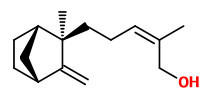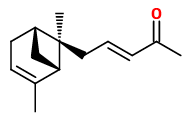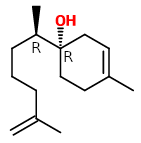Benutzer-Werkzeuge
Santalum album L. - Santalaceae - (East Indian) sandalwood, white sandalwood, Sandelholz, (Indischer) Sandelholzbaum
Evergreen tree, native to Southeast Asia (India to Malesia) and Western Australia; leaves opposite, elliptic to ovate, glabrous above, glaucous benaeth; flowers small, reddish to purple-brown; fruit a fleshy drupe, globose, purple to black when ripe.
http://www.worldagroforestry.org/treedb2/AFTPDFS/Santalum_album.pdf
„S. album is a threatened species indigenous to South India, and grows in the Western Ghats and a few other mountain ranges such as the Kalrayan and Shevaroy Hills… Sandalwood from the Mysore region of Karnataka (formerly Mysore), and marayoor forest in Kerala, southern India, is high in quality. New plantations were created with international aid in Tamil Nadu for economic exploitation.“
https://en.wikipedia.org/wiki/Sandalwood
„S.album has been the primary source of sandalwood and the derived oil. These often hold an important place within the societies of its naturalised distribution range… The use of S. album in India is noted in literature for over two thousand years. It has use as wood and oil in religious practices.“
https://en.wikipedia.org/wiki/Santalum_album
„Sustainably-managed trees can be harvested on a 16-year cycle. Santanol implements a 16-year harvest rotation cycle because after the 15-year-old tree is harvested, a year is devoted to soil remediation and the land preparation before replanting new seedlings.“ https://www.kellyablard.com/sustainability/threatened-east-indian-sandalwood-santalum-album-thrives-in-australia/
„The analysis of odour components in East Indian Sandalwood Oil (Santalum album L.)… based on GC-, GC-FTIR- and GC-MS-data resulted in the identification of α-santalene, α-santalal, β-santalal, epi-β-santalal, α-santalol, β-santalol, (E)-β-santalol, α-bergamotol and spirosantalol in Sandalwood Oil… as the most intense aroma compounds of these oils.“
[GC-FTIR and GC-MS in odour analysis of essential oils., Nikiforov, A., Jirovetz, L., Buchbauer, G., Raverdino, V., Microchimica Acta, Vol.95(1-6), 1988, 193-198]
To identify the compounds evoking the characteristic aroma components of sandalwood oil, an aroma extract dilution analysis (AEDA) was applied. Among the nineteen aroma-active compounds detected by gas chromatography-olfactometry and AEDA in the flavor dilution (FD) factor range of 2-1024, α-santalene (FD 2) and β-santalene (FD 2) showed only low FD factors. (+)-(Z)-α-santalol (512) and (-)-(Z)-β-santalol (1024) showed the highest FD factors. Cyclosantalal (FD 32) and epi-cyclosantalal (FD 16) seem to be sensoric relevant (green-aldehydic, watery woody) components of sandalwood oil.
[Neue, geruchsaktive Inhaltsstoffe von Sandelholzöl, Teil 1. Isolierung und Strukturaufklärung von Cyclosantalal und epi-Cyclosantalal., Brunke, E.J., Schmaus, G., Dragoco Report, 5, 1995, 197-217]
GC-O, aroma extract dilution analysis (AEDA) and partial synthesis showed nor-α-trans-bergamotenone (<0.01%; FD 1024; fatty-nutty milky sandalwood-like) as one of the most intense aroma components of sandalwood oil. Other trace components like nor-β-santalenone (FD 128; fatty sandalwood-like) and nor-α-santalenone (FD 64; woody ionone-like) contribute to the overall impression of the scent of the oil.
[Neue, geruchsaktive Inhaltsstoffe von Sandelholzöl, Teil 2. Isolierung, Strukturaufklärung von Partialsynthese von Nor-α-trans-Bergamotenon., Brunke, E. J., Schmaus, G. „“ Dragoco Rep 6 (1995): 245-257] see also:
„The fatty, oily organoleptic properties of (-)-1, strong compared to nor-α-, nor-β-, and nor-epi-β-santalenone, allow its possible application for the reconstitution of sandalwood essential oil top notes, despite the fact that (-)-1 itself does not possess any woody, sandalwood-like character.“
[Chapuis, Christian, et al. „Preparation and Absolute Configuration of (−)‐(E)‐α‐trans‐Bergamotenone.“ Helvetica chimica acta 81.1 (1998): 153-162]
„On GC sniffing (Column: DBWax) of East Indian Sandalwood oil a compound in very low concentration with a strongly flowery, very pleasant odor reminiscent of lily of-the-valley is discernible by sensory means. This compound is iso-beta-bisabolol.“
[Schmaus, G., Meier, M., Braun, N., Hoelscher, B., Pickenhagen, W. (2004). U.S. Patent Application No. 10/483,276]
 (Z)-α-santalol (woody, cedarwood) |  (Z)-β-santalol (typical sandalwood, milky, urinous) |  nor-α-trans-bergamotenone (fatty-nutty milky) |  iso-β-bisabolol (pleasant flowery, muguet) |
„Wood of Santalum album and resin of Boswellia carterii Birdw. were used to obtain their volatile oils by means of supercritical fluid extraction with carbon dioxide… The main compounds contained in the sandalwood volatile oil were: α-santalol (46.1%), β-santalol (20.4%), epi-β-santalol (6.8%) and trans-α-bergamotol (5.4%). In the corresponding HD essential oil the α-santalol and β-santalol contents were lower: 35.0% and 14.0%, respectively.“
[Extraction of Santalum album and Boswellia carterii Birdw. volatile oil by supercritical carbon dioxide: influence of some process parameters., Marongiu, B., Piras, A., Porcedda, S., Tuveri, E., Flavour and fragrance journal, Vol.21(4), 2006, 718-724]
Analysis (GC-MS) of a steam-distilled dichlormethane extract of S.album wood from Kerala showed α-santalol (46-57%) and β-santalol (26-30%) as main components of the volatile oil. Other constituents were epi-(Z)-β-santalol (5-11%), (E)-α-bergamotol (2-4%), (E)-nuciferol (1-2%), teresantalol (1-2%) and (E)-β-santalol (1.0-1.4%), β-santalene (0.5-1.9%), (Z)-lanceol (0.4-1.5%), α-santalene (0.1-1%), epi-β-santalene (0.3-1.3%) and benzoquinone (0.1-0.4%).
[Identification of Santalum album and Osyris lanceolata through morphological and biochemical characteristics and molecular markers to check adulteration., Bhat, K.V., Balasundaran, M., Balagopalan, M., KFRI Res Rep. 307, 2006]
„The scent of the exquisite natural sandalwood oil is milky and creamy-lactonic, unlike any other wood, though a certain smoky dryness recalling cedarwood is also perceptible… (-)-(Z)-β-santalol, which accounts for 20-25% of the oils weight, is unanimously considered to be the main sandalwood vector…While (+)-(Z)-α-santalol and (+)-α-santalene have a rather weak odor, and are responsible for dry cedarwood facets, their metabolites and oxygenated derivatives of the normonoterpene santene contribute more to the typical odor character of sandalwood oil.“
Important trace components (ca.70 are known) of sandalwood oil are acetyldihydroalbene (woody-ambery with pronounced ionone aspects), N-furfurylpyrrole (roasty, pyrazine, herbaceous), dendrolasine (green, fatty, citrusy, nitrile-like), and (6R,7R)-α-bisabolol (strong floral, lily-of-the-valley); the structural related phenolics such as eugenol (clove), isoeugenol (carnation) and 6-methoxy eugenol (warm smoky) contribute with smoky aspects.
[Scent and Chemistry, Günther Ohloff, Wilhelm Pickenhagen, Philip Kraft, Wiley-VCH, 2012, 300-306]
„We could say that Sandalwood Oil Mysore has several essential notes, the milky note mainly provided by (E)-α-Bergamotol, (-)-(E)-α-Bergamotenone, Nor-α-trans-Bergamotenone, Nor-β-Santalenone and Nor-epi-β-Santalenone amongst other but these five are providing at least 98% of the milky note of the natural oil!, then a pyrrolic note provided by n-Furfuryl pyrrole, the characteristic note provided by (-)-β-Santalol and a certain woody earthy note provided by corresponding aldehydes like (-)(Z)-β-Santalal, or other alcohols as , (Z)-Lanceol, the highest peak in African sandalwood oil and this is why the African oil is by far more earthy than the Indian oil, (E)-Nuciferol and Spirosantalol.“
[Arcadi Boix Camps, „Mysterius wood scents, second part.“ fb 20140601]
Among six commercial “sandalwood oils” tested, „… none of them met the requirements of ISO 3518:2002 concerning the content of the main component (α-santanol)… Only one oil (P6) turned out to be the genuine sandalwood oil - Santalum album, and the description corresponded to the information provided by the manufacturer; three samples (P1, P2 and P3) were obtained from Amyris balsamifera; two manufacturers provided correct information (P1 and P2) about its origin, while the third incorrectly claimed it to be Santalum album; two oils (P4 and P5) were synthetic mixtures, which were supposed to imitate sandalwood fragrance. While P4 was labeled as being obtained from Santalum album, it turned out to be a mixture of chemical substances synthesized under laboratory conditions. The manufacturer of P5 did not indicate any source of origin.“
[Kucharska, Malgorzata, et al. „A Comparison of the Composition of Selected Commercial Sandalwood Oils with the International Standard.“ Molecules 26.8 (2021): 2249] https://www.mdpi.com/1420-3049/26/8/2249/pdf

Köhler, F.E., Medizinal Pflanzen, vol.3 t.43 (1890)
http://www.plantillustrations.org/species.php?id_species=905123
Santalum album leaves and flowers, author: Vinayaraj, CC-BY-SA 3.0
wikimedia commons
